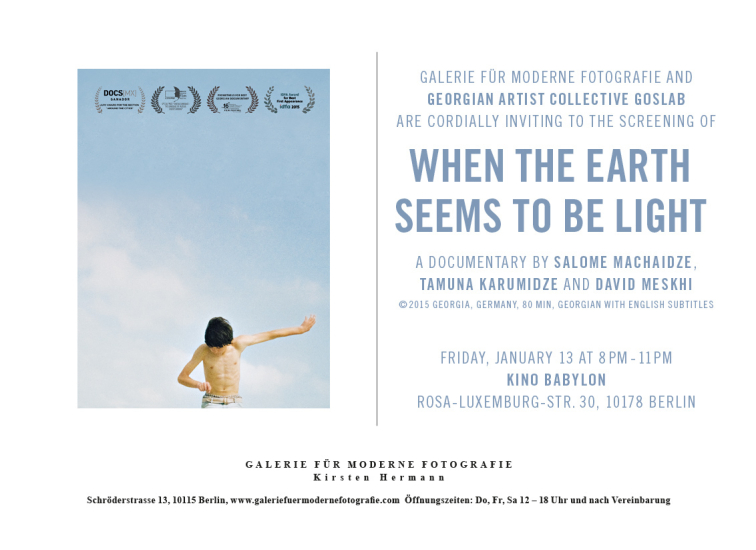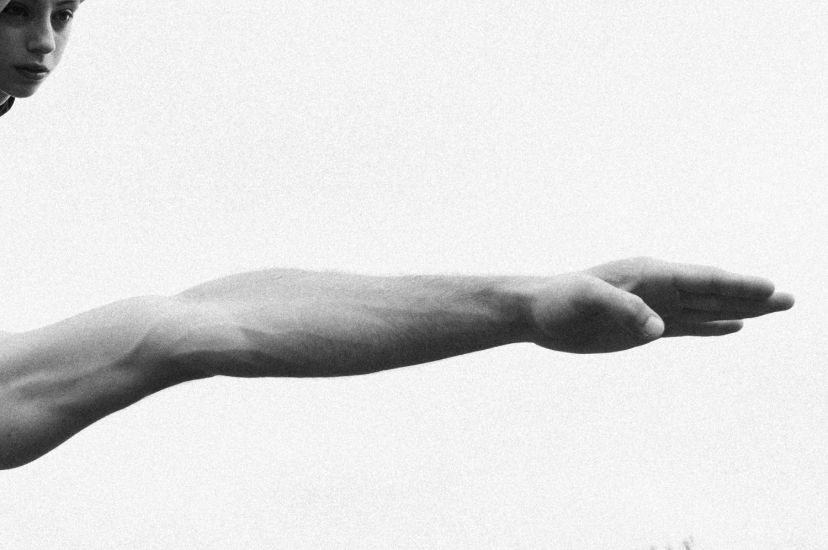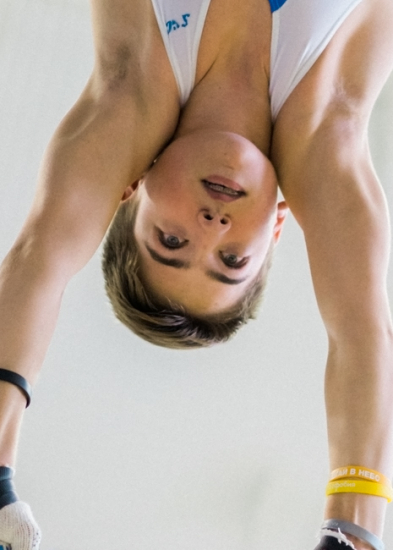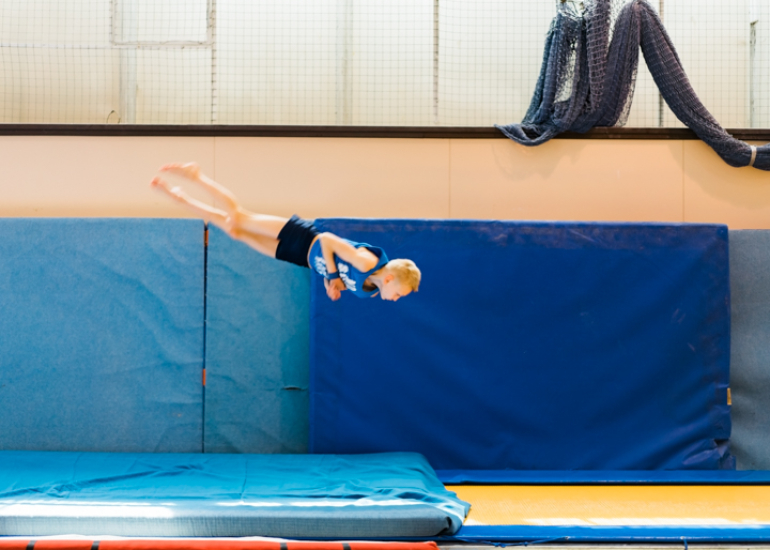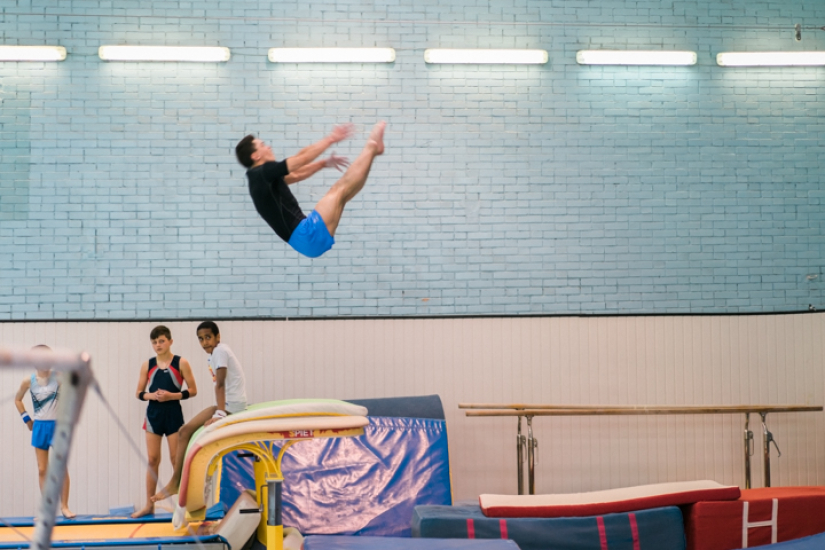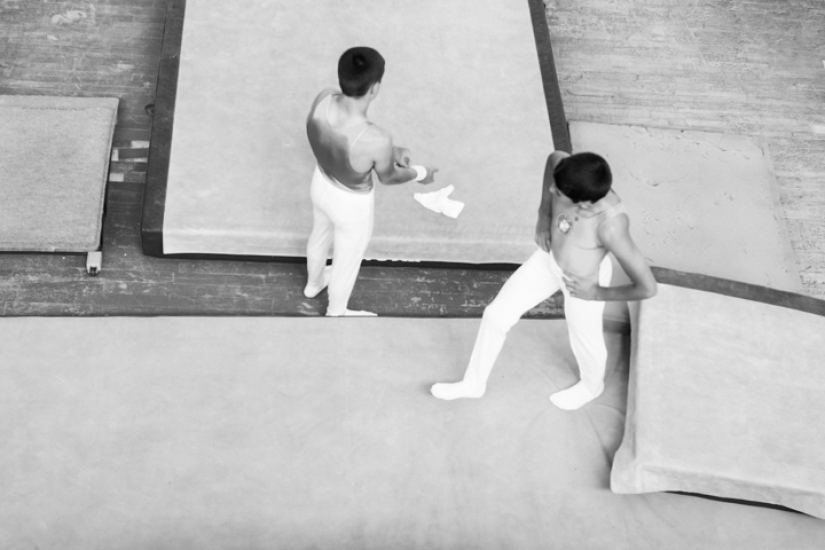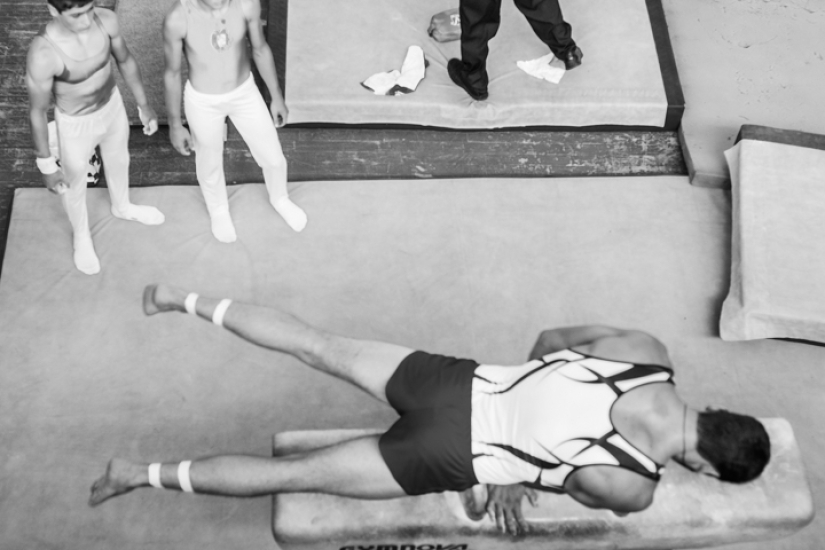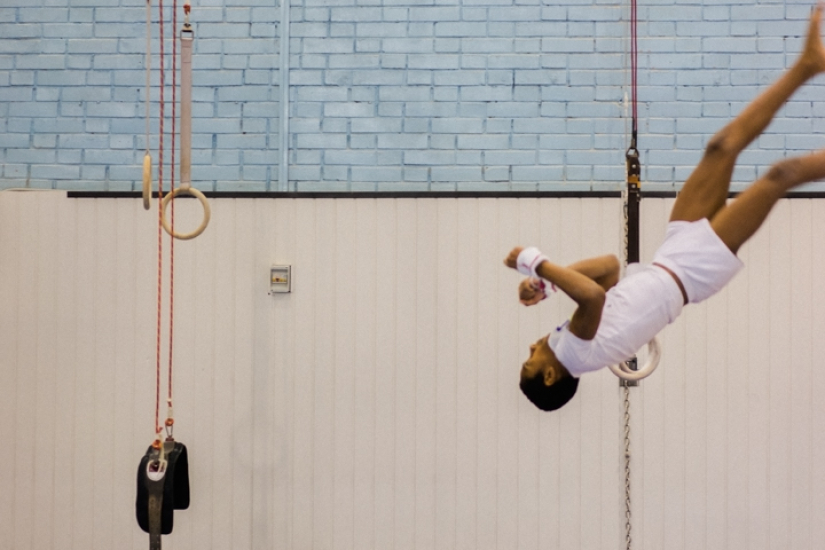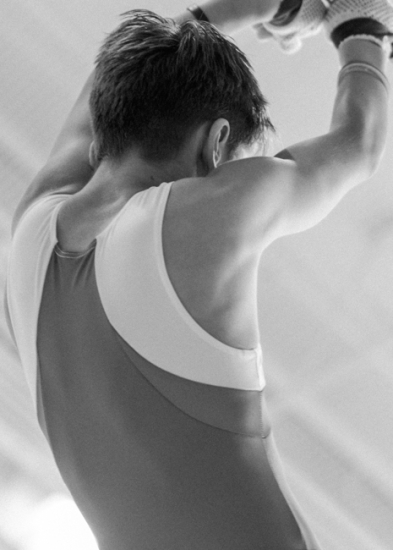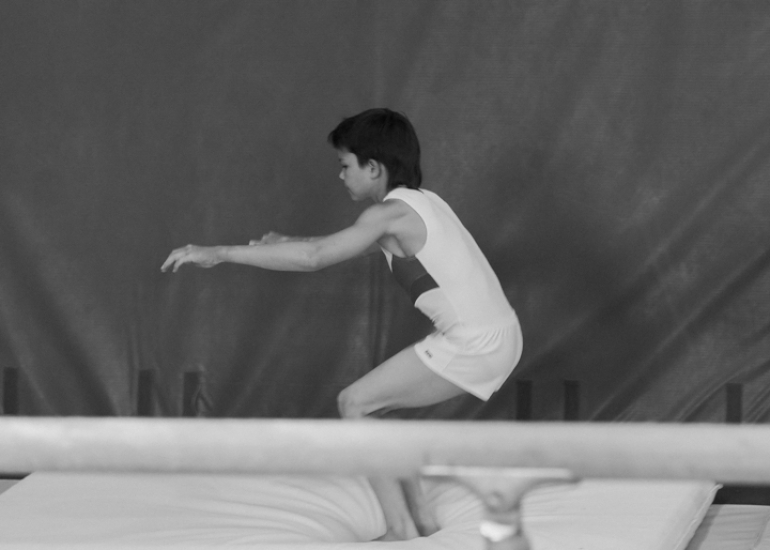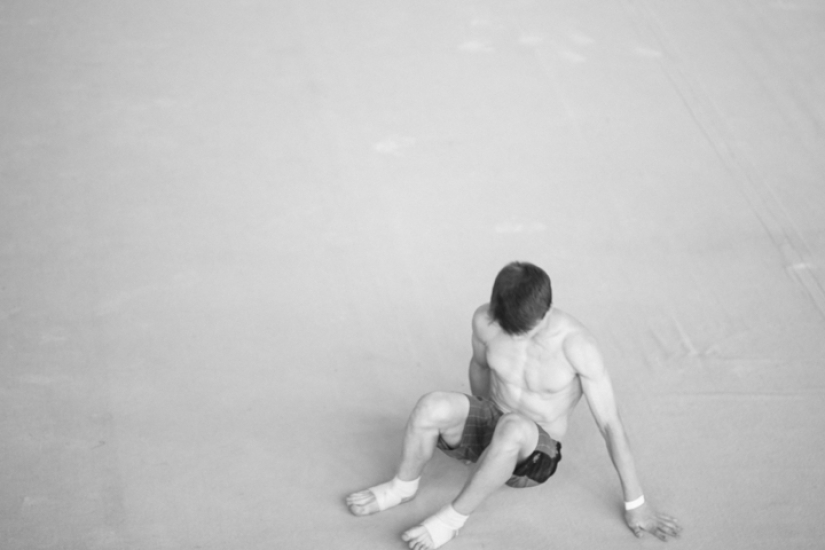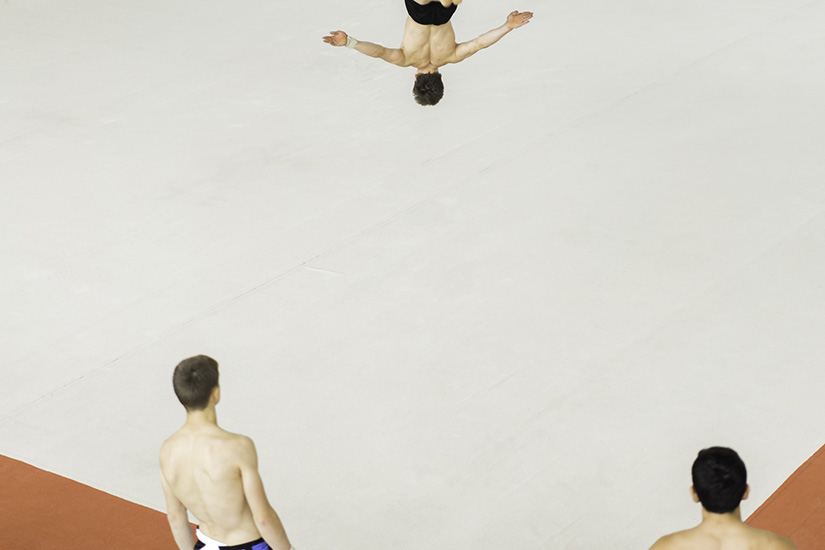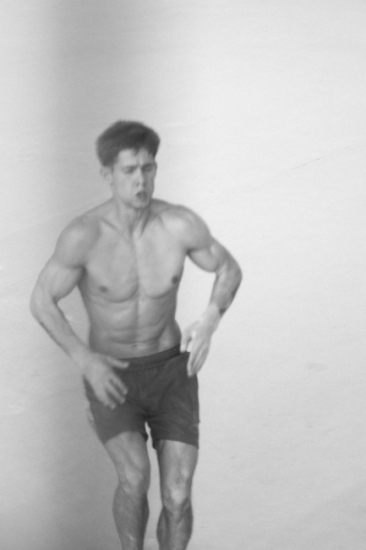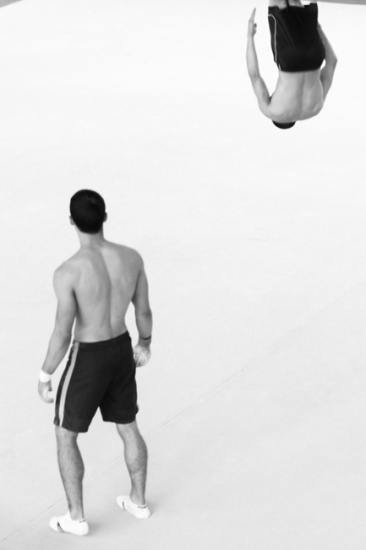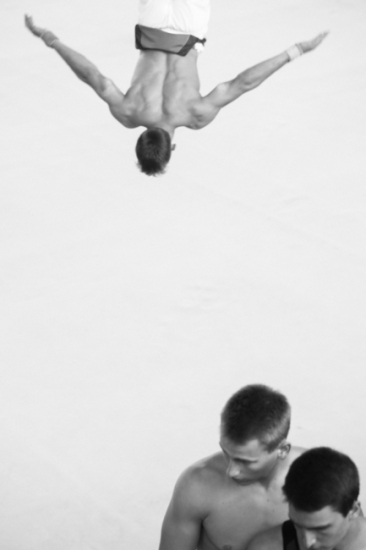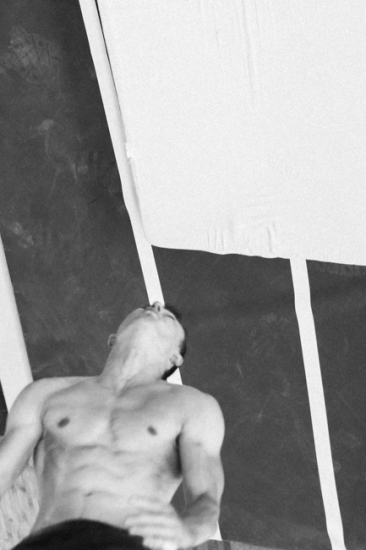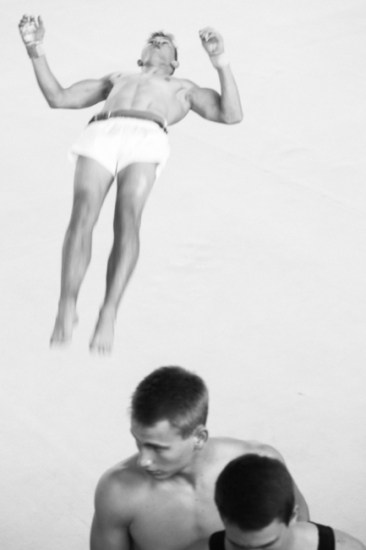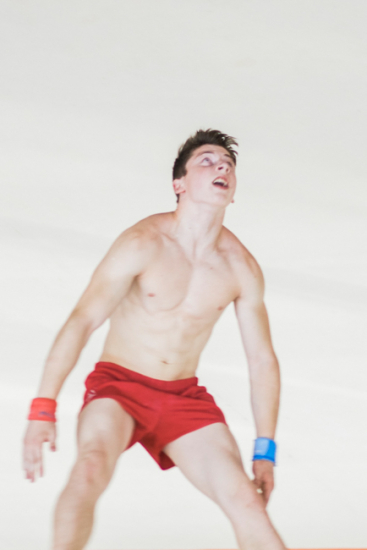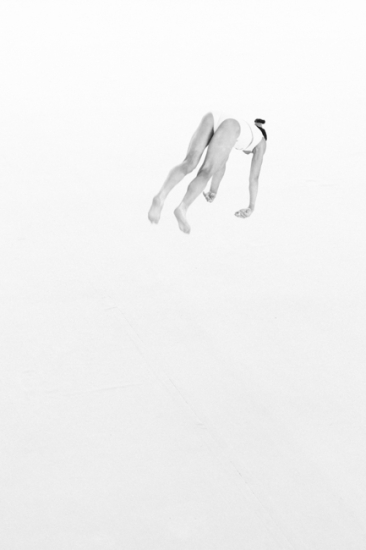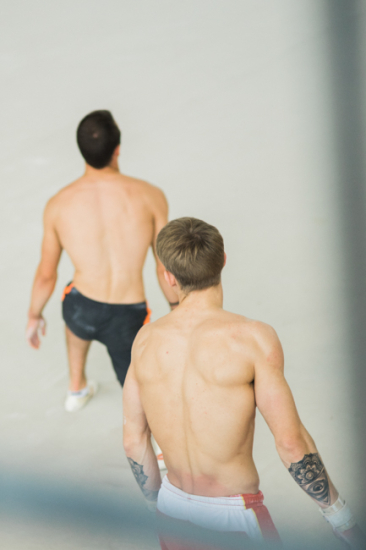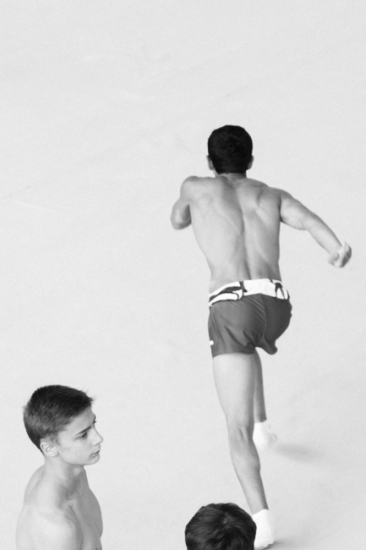The fascinating moment between leaping and falling is difficult to put into words. The brief feeling of weightlessness when the body reaches the highest point, pausing momentarily before reversing direction and gravity pulls it back towards the ground, is a central,recurring motif in David Meskhi’s photography.
“The energy needed to achieve a goal, the daring, liberating moment of the leap, which brings you invariably further, but which is also tied to the counter-movement of the fall, is for me a powerful metaphor for a dynamic that we are repeatedly confronted with in life,” describes Meskhi.
His photographs capturing the various phases of this process in all its potency, tension and beauty are to be understood as a photographic appraisal of this outward and inner movement. Hence it’s actually the two experiences of uprising and falling united in the leap that shape our every day actions in a critical way: on the one hand, the sense of achievement that arises when we overcome the fear of taking the first step and achieve the set goal, and,on the other, the realization that this moment is fleeting and that you are compelled over and over to wager the next leap, the next start.
“The energy needed to achieve a goal, the daring, liberating moment of the leap, which brings you invariably further, but which is also tied to the counter-movement of the fall, is for me a powerful metaphor for a dynamic that we are repeatedly confronted with in life,” describes Meskhi.
His photographs capturing the various phases of this process in all its potency, tension and beauty are to be understood as a photographic appraisal of this outward and inner movement. Hence it’s actually the two experiences of uprising and falling united in the leap that shape our every day actions in a critical way: on the one hand, the sense of achievement that arises when we overcome the fear of taking the first step and achieve the set goal, and,on the other, the realization that this moment is fleeting and that you are compelled over and over to wager the next leap, the next start.
In a selection of photographs, the Galerie für moderne Fotografie presents precisely executed jumps from gymnastics and skateboarding. David Meskhi’s photos of professional athletes were created in Georgia and Russia. Although gymnastics is a deeply rooted part of the socialist-influenced culture in these countries, skateboarding is a new phenomenon that has made an impact within the last ten years.
As co-director of the documentary When The Earth Seems to be Light (2015), Meskhi has already dedicated himself to this newly emerging youth culture in post-Soviet Georgia, one created under different conditions compared to California in the 1970s, where skateboarding was founded.
Even though the contexts shaping these two sports could hardly be more different, they share in common a passion for exquisitely executed movements, as well as the testing out and overcoming of one’s own physical limitations. Meskhi’s shots focus on the bodies of the athletes. He depicts their incessant training and the precision they employ in bringing their bodies into balance. This process is reflected in the work of the photographer: in order to capture the critical moment of balance and weightlessness in the jump requires an equal (even higher) degree of concentration than that of the athlete.
As co-director of the documentary When The Earth Seems to be Light (2015), Meskhi has already dedicated himself to this newly emerging youth culture in post-Soviet Georgia, one created under different conditions compared to California in the 1970s, where skateboarding was founded.
Even though the contexts shaping these two sports could hardly be more different, they share in common a passion for exquisitely executed movements, as well as the testing out and overcoming of one’s own physical limitations. Meskhi’s shots focus on the bodies of the athletes. He depicts their incessant training and the precision they employ in bringing their bodies into balance. This process is reflected in the work of the photographer: in order to capture the critical moment of balance and weightlessness in the jump requires an equal (even higher) degree of concentration than that of the athlete.
However, Meskhi deliberately manipulates at times the technical requirements for his photos, adding an element of the unpredictable to them. In addition to digital capture technology, which allows the photographer to check the images, he uses for his analog shots film past its expiration date. This can affect the image color due to a shift in the ratios of chemical components but these color distortions also make the images hard to classify
temporally, thereby disrupting an easy reading of history via photography.The increasing degree of abstraction observed in Meskhi’s work makes it difficult for the viewer to locate the photographic motifs spatially, depriving the photographs of any documentary character. The use of this artifice lends Meskhi’s images a mystical, intangible quality and directly conveys even compositionally the magic moment of the jump—between control and letting go.
For german version of the text, further information, press inquiries and images please contact Kirsten Hermann:
mail@galeriefuermodernefotografie.com
temporally, thereby disrupting an easy reading of history via photography.The increasing degree of abstraction observed in Meskhi’s work makes it difficult for the viewer to locate the photographic motifs spatially, depriving the photographs of any documentary character. The use of this artifice lends Meskhi’s images a mystical, intangible quality and directly conveys even compositionally the magic moment of the jump—between control and letting go.
For german version of the text, further information, press inquiries and images please contact Kirsten Hermann:
mail@galeriefuermodernefotografie.com
